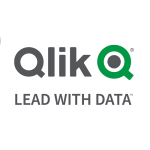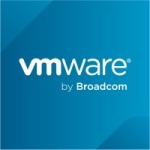What is our primary use case?
StreamSets is a wonderful data engineering, data ops tool where we can design and create data pipelines, loading on-prem data to the cloud. One of our major projects was to move data from on-premises to Azure and GCP Cloud. From there, once data is loaded, the data scientist and data analyst teams use that data to generate patterns and insights.
For a US healthcare service provider company, we designed a StreamSets pipeline to connect to relational database sources. We did generate schema from the source data loaded into Azure Data Lake Storage (ADLS) or any cloud, like S3 or GCP. This was one of our batch use cases.
With StreamSets, we have also tried to solve our real-time streaming use cases as well, where we were streaming data from source Kafka topic to Azure Event Hubs. This was a trigger-based streaming pipeline, which moved data when it appeared in a Kafka topic. Since this pipeline was a streaming pipeline, it was continuously streaming data from Kafka to Azure for further analysis.
How has it helped my organization?
We can securely fetch the passwords and credentials stored in Azure Key Vault. This is a fundamentally very strong feature that has improved our day-to-day life.
What is most valuable?
It is a pretty easy tool to use. There is no coding required. StreamSets provides us a canvas to design our pipeline. At the beginning of any project, it gives us a picture, which is an advantage. For example, if I want to do a data migration from on-premise to cloud, I will draw it for easier understanding based on my target system, and StreamSets does exactly the same thing by giving us a canvas where I can design our pipeline.
There are a wide range of available stages: various sources, relational sources, streaming sources. There are various processes like to transform the source data. It is not only to migrate data from source to destination, but we can utilize different processes to transform the data. When I was working on the healthcare project, there was personal identification information on the personal health information (PHI) data that we needed to mask. We can't simply move it from source to destination. Therefore, StreamSets provides masking of that sensitive data.
It provides us a facility to generate schema. There are different executors available, e.g., Pipeline Finisher executor, which helps us in finishing the pipeline.
There are different destinations, such as S3, Azure Data Lake, Hive, and Kafka Hadoop-based systems. There are a wide range of available stages. It supports both batch and streaming.
Scheduling is quite easy in StreamSets. From a security perspective, there is integration with keywords, e.g., for password fetching or secrets fetching.
It is pretty easy to connect to Hadoop using StreamSets. Someone just needs to be aware about the configuration details, such as which Hadoop cluster to connect and what credentials will be available. For example, if I am trying with my generic user, how do I connect with the Hadoop distributed system? Once we have the details of our cluster and the credential, we can load data to the Hadoop standalone file system. In our use case, we collected data from our RDBMS sources using JDBC Query Consumer. We queried the data from the source table, captured that data, and then loaded the data into the destination Hadoop distributed file system. Thus, configuration details are required. Once we have the configuration details, i.e., the required credentials, we can connect with Hadoop and Hive.
It takes care of data drift. There are certain data rules, matrix rules, or capabilities provided by StreamSets that we can set. So, if the source schema gets deviated somehow, StreamSets will automatically notify us or send alerts in automated fashion about what is going wrong. StreamSets also provides Change Data Capture (CDC). As soon as the source data is changed, it can capture that and update the details into the required destination.
What needs improvement?
The logging mechanism could be improved. If I am working on a pipeline, then create a job out of it and it is running, it will generate constant logs. So, the logging mechanism could be simplified. Now, it is a bit difficult to understand and filter the logs. It takes some time. For example, if I am starting with StreamSets, everything is fine. However, if I want to dig into problems that my pipeline ran into, it initially takes some time to get familiar with it and understand it.
I feel the visualization part can be simplified or enhanced a bit, so I can easily see what happened with my job seven days earlier and how many records it transmitted.
For how long have I used the solution?
I have been using StreamSets for close to four and a half years when creating my data pipelines in our projects.
What do I think about the stability of the solution?
Stability-wise, it is wonderful and quite good. Mostly, since the solution is completely cloud-based in our project, we just need to hit a URL and then we are logged into StreamSets with our credentials. Everything is present there. Other than some rare occasions, StreamSets behaves pretty well.
There were certain memory leak issues for a few stages, like Azure Data Lake, but those were corrected with immediate solutions, like patches and version upgrades.
Stability-wise, I would rate it as eight and a half or nine out of 10.
What do I think about the scalability of the solution?
I would like auto scaling for heavy load transfer. This applied particularly when we were our data migration project. The tables had more than 10 millions of records in them. When we utilized StreamSets, it took a huge amount of time. Though we were doing every schema generation, we were using ADLS as a destination, and it hung for a good amount of time. So, we considered PySpark processes for our tables, which have greater than 10 millions of records. Usually, it works pretty well with the source tables and the data size is close to five to six million records, but when it is closer to 10 million, I personally feel the auto scaling feature could be improved.
How are customer service and support?
We have spent a good amount of time dealing with their technical support team. The first step is to check the documentation, then work with them.
I had a chance to work with StreamSets during our use case. They helped us out in a good manner with a memory leak issue that we were facing in our production pipeline. So, there was one issue where our pipelines were running fine in dev and the lower environment, i.e., dev and QA, but when we moved those pipelines into production, we were getting a memory leak issue where the JVM ran out of memory exception.
We tried reducing the number of threads and the batch size for the small table, but it was still creating issues. Then, we connected with StreamSets' support team. They gave us a customized patch, which our platform team installed in our production environment. With some collaborative effort of around a week, we were finally able to run our pipeline pretty well.
I would rate the customer support and the technical support as quite good and knowledgeable (eight out of 10). They helped with issues that were occurring in our work. They accepted that there were some issues with the version, which StreamSets released and we were using. They accepted that the version particularly had some issues with the memory management. Therefore, the immediate solution that they provided was a patch, which our platform team installed. However, the long-term solution was to update or upgrade our StreamSets Data Collector platform from version 3.11 to 4.2, and that solved our problem.
How would you rate customer service and support?
Which solution did I use previously and why did I switch?
We were using Cloudera distribution. All our projects were running, utilizing Hadoop, and the distribution was Cloudera Hortonworks. We were utilizing Sqoop and Hive as well as PySpark or Scala-based processes to code. However, StreamSets helped us a lot in designing our data pipeline quickly in a very fast way.
It has made our job pretty easy in terms of designing, managing, and running our data engineering pipeline. Previously, if I needed to transfer data from source to destination, I would need to use Sqoop, which is a Hadoop stack technology used to establish connectivity with the RDBMS, then load it to the Hadoop distributed file system. With Sqoop, I needed to have my coding skills ready. I needed to be very precise about the connection details and syntax. I needed to be very aware of them. StreamSets solved this problem.
Its greatest feature is that it provides an easy way to design your pipeline. I just need to drag and drop source JDBC Query Consumer to my canvas as well as drag and drop my destination to the canvas. I then need to connect both these stages and be ready with my configuration details. As soon as I am done with that, I will validate the pipeline. I can create a job out of it and schedule it, even the monitoring. All these things can be achieved by a single control panel. So, it not only solves the developer's basic problems, but it also has greatly improved the experience.
We were previously completely using the Hadoop technology stack. Slowly, we started converting our processes into data engineering pipelines, which are designed into StreamSets. Earlier, the problem area was to write code into Sqoop or create Sqoop scripts to capture data from source, then put it into HDFS. Once data was in HDFS, we would write another PySpark process, which did the optimization and faster loading of the data, which is in Hadoop Distributed File System to a cloud-based storage data lake, like ADLS or S3. However, when StreamSets came into picture, we didn't need an intermediary, three-storage distributed file system like HDFS. We could simply create a pipeline that connects to RDBMS and load data directly to the cloud-based Azure Data Lake. So there is no requirement for an intermediary Hadoop Distributed File System (HDFS), which saves us a great amount of time and also helps us a lot in creating our data engineering pipelines.
Microsoft provided Change Data Capture tools, which one of our team members was using. Performance-wise, I personally feel StreamSets is way faster. A few of the support team members were using Informatica as well, but it does not provide powerful features that can handle big amounts of data.
How was the initial setup?
For our deployment model, we were following three environments: dev, QA and prod. Our team's main responsibility is to hydrate Azure Data Lake and GCP from the source system. Control Hub is hosted on GCP, and we were hitting the URL to log into StreamSets. All the data collector machines are created on Google Cloud Platform, and we use a dev environment. Whenever we create and do a PoC, we work in a dev environment. Once our pipeline and jobs are working fine, we move our pipelines to our QA environment, which is export and import. It is pretty easy to do via StreamSets Control Hub. We can simply select a job and export it, then log back into the QA environment and import the job. Once we import the job, the associated pipeline, and all the parameters, we have an option to import the whole bundle, like the pipeline, parameter, and instances. We can import everything. Once this is also working fine, we have another final environment, which is the production which is based on the source refresh frequencies.
What about the implementation team?
In our company, we have a good data engineering team. We have a separate administrator team who is mainly responsible for deploying it on cloud, providing us libraries whenever required. There is a separate team who is taking care of all the installations and platform-related activities. We are primarily data engineers who utilize the product for solutions.
What was our ROI?
StreamSets’ data drift resilience has reduced the time it takes us to fix data drift breakages. For example, in our previous Hadoop scenario, when we were creating the Sqoop-based processes to move data from source to destinations, we were getting the job done. That took approximately an hour to an hour and a half when we did it with Hadoop. However, with the StreamSets, since it works on a data collector-based mechanism, it completes the same process in 15 minutes of time. Therefore, it has saved us around 45 minutes per data pipeline or table that we migrate. Thus, it reduced the data transfer, including the drift part, by 45 minutes.
What's my experience with pricing, setup cost, and licensing?
StreamSets Data Collector is open source. One can utilize the StreamSets Data Collector, but the Control Hub is the main repository where all the jobs are present. Everything happens in Control Hub.
What other advice do I have?
For people who are starting out, the simple advice is to first try out the cloud login of StreamSets. It is freely available for everyone these days. StreamSets has released its online practice platform to design and create pipelines. Someone simply needs to go to cloud.login.streamsets.com, which is StreamSets official website. It is there that people who are starting out can log into StreamSets cloud and spin up their StreamSets Data Collector machines. Then, they can choose their execution mode. It is all in a Docker-containerized fashion. You don't need to do anything.
You simply need to have your laptop ready and step-by-step instructions are given. You just simply spin up your Data Collector, the execution mode, and then you are ready with the canvas. You can design your pipeline, practice, and test there. So, if you want to evaluate StreamSets in basic mode, you can take a look online. This is the easiest way to evaluate StreamSets.
It is a drag-and-drop, UI-based approach with a canvas, where you design the pipeline. It is pretty easy to follow. So, once your team feels confident, then they can purchase the StreamSets add-ons, which will provide them end-to-end solutions and vendor support. The best way is to log into their cloud practice platform and create some pipelines.
In my current project, there is a requirement to integrate with Snowflake, but I don't have Snowflake experience. I have not integrated Snowflake with StreamSets yet.
I personally love working on StreamSets. It is part of my day-to-day activities. I do a lot of work on StreamSets, so I would rate them pretty well as nine out of 10.
Disclosure: PeerSpot contacted the reviewer to collect the review and to validate authenticity. The reviewer was referred by the vendor, but the review is not subject to editing or approval by the vendor.



















